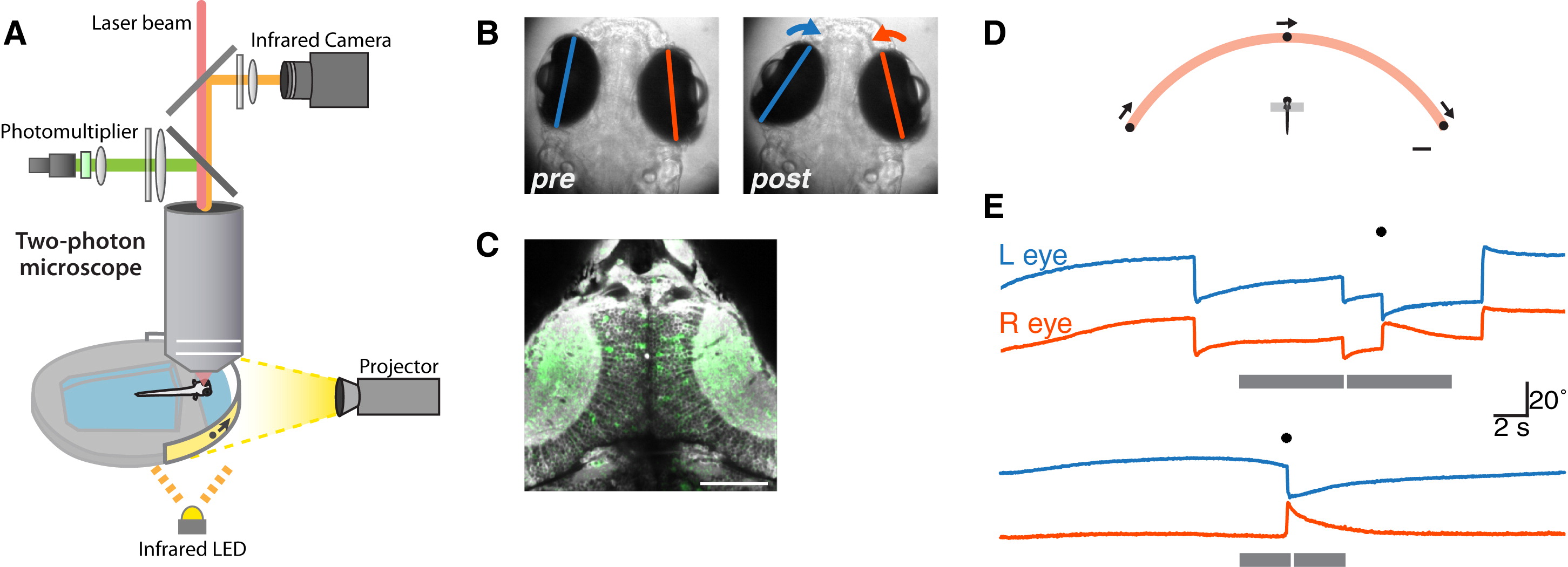Fig. 1
2P Functional Calcium Imaging during Virtual Hunting Behavior in Larval Zebrafish
(A) Schematic of experimental setup. Larval zebrafish are tethered in agarose gel but able to freely move their eyes and tail. Visual stimuli are presented by projection onto a miniature screen in front of the animal. A 2P microscope is used to image fluorescent calcium signals, and eye position is monitored simultaneously through the microscope objective using an infrared camera.
(B) Eye position recorded before (left) and after (right) a predatory convergent saccade, during 2P imaging.
(C) Neural activity recorded in the optic tecta of a Tg(elavl3:GCaMP5G) transgenic larva. The fractional change in fluorescence (Δ F/F) is shown in green (arbitrary color scale) overlaid on an anatomical projection of the focal plane (gray). This field-of-view corresponds to FOV2 as shown in Figure 3A. Dorsal view, anterior top. Scale bar, 50 µm.
(D) Schematic of the behavioral assay (viewed from above). The animal is presented with visual stimuli that are projected onto a screen covering ~200° visual space. Scale bar, 2 mm.
(E) Examples of eye-position records from two trials in two different larvae. The gray bar indicates the period during which the visual cue sweeps across visual space from +100° right to 100° left (top) or left-right (bottom). The different lengths of the bars correspond to different speeds of stimulus motion. The white tick indicates the time when the cue is at 0°, directly in front of the animal. The black symbol indicates the automatic detection of a convergent saccade. Downward deflection of eye position traces corresponds to clockwise eye rotation.

